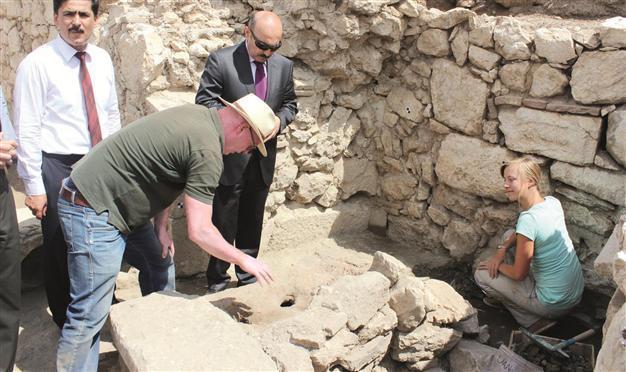Ancient kitchen found in Sagalassos
BURDUR - Doğan News Agency

A kitchen was completely unearthed in the ancient city of Sagalassos. ‘It is very small compared to modern-day kitchens,’ says Jereon Poblome. AA photo
A 2,000-year-old kitchen, which dates back to the late Roman era, has been discovered in the ancient city of Sagalassos in the southern province of Burdur.
Excavations in the ancient city started in early June, but the discovery of the kitchen was only reported last month.
“The kitchen was completely unearthed. We will learn in great detail about the kitchen culture present in that era. This is a very detailed scientific work. Not only archaeologists, but also anthropologists, zoologists and botanists are working together [on this project],” said Professor Jereon Poblome, head of excavations.
“There are no tiles on the ground, only soil. The understanding of hygiene was different in the late Roman era. Ergonomically, it is a difficult kitchen for us [to use], but they became used to it. They use to put coal in the middle and a pot on it with bulgur and meat inside. They used to put two more pots on both sides to keep it warm. There were no ovens at that time, so they used a floor furnace and used it to cooked bread. All details [regarding the kitchen and its surroundings] will eventually come to light,” Poblome added, noting the ancient kitchen was very small compared to modern-day kitchens.
“We are mainly working on excavating baths [at the moment]. We would like to open this place to visitors because we want show the beauty this place has to offer. Our works in the upper agora have been continuing for many years. We estimate that they will end in 2017-2018,” he said.
Monumental city Since 1990, Marc Waelkens of the Catholic University of Leuven in Belgium has been leading a major excavation project at the Sagalassos site.
The first survey documents 1,000 years of occupation – from Alexander the Great to the 7th century – as well as the changing settlement patterns, vegetation history, farming practices and the changes in the climate in the area during the last 10,000 years.
